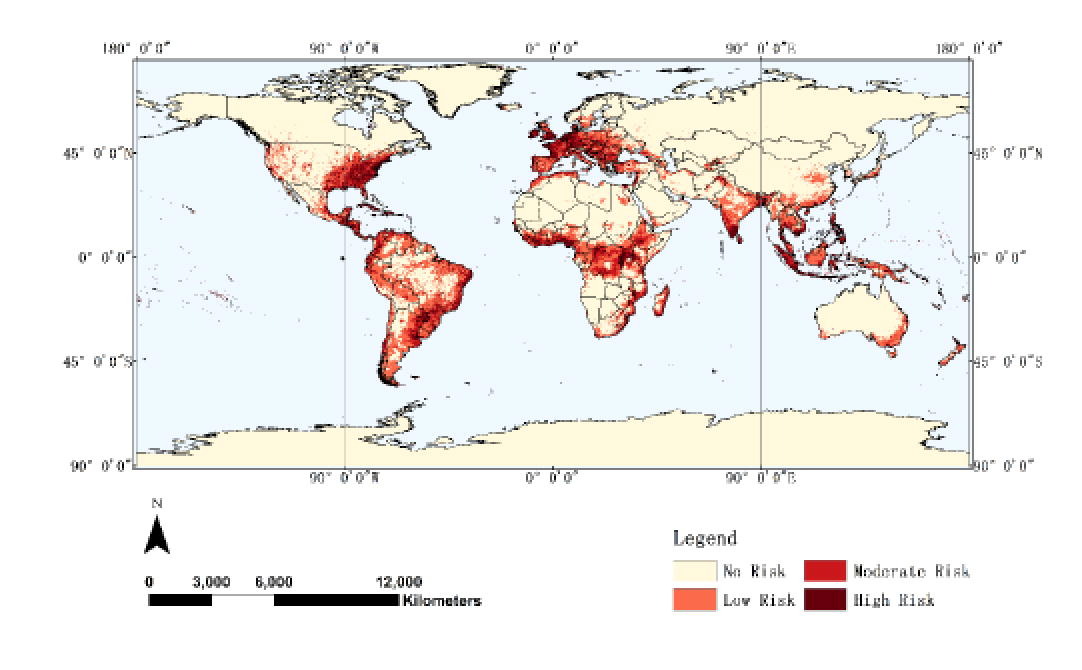Biosafety and Health. 2022.
DOI : https://doi.org/10.1016/j.bsheal.2022.03.012
Zika virus (ZIKV) may cause severe microcephaly in newborn babies and Guillain-Barré syndrome in some adults. In recent decades, its range has expanded in 86 countries. There are two ecologically and evolutionarily district cycles: urban cycle and sylvatic cycle. This work aimed to estimate the urban and sylvatic cycle areas of ZIKV throughout the world. The occurrence records for vectors, non-human primate hosts, and ZIKV were collected. We chose historical climate data, predicted vectors distribution, human population density, and elevation data as the variables to fit the maximum entropy model (MaxEnt). Current risk area and future prediction were performed with global climate models (GCMs) and shared socioeconomic pathways (SSPs). Predicting the ZIKV risk area would help tailor related control strategies. The results indicated that 16.6% of the world’s landmass (except Antarctica) is a risk area in the urban cycle. Approximately 6.22 billion people (78.69% of the global population) live in the risk area, with the vast majority in South Asia, tropical Africa, South America, North America, and countries around the Mediterranean Sea. Future climate change decreases the risk area of ZIKV. This study also suggested that the sylvatic cycle happened between the Tropic of Cancer and the Tropic of Capricorn. The overlap region of the urban and sylvatic cycles could be hotpots that ZIKV spill from the sylvatic to the urban cycle. Our results indicated that long-term passenger screening, mosquito surveillance, and control are necessary.
